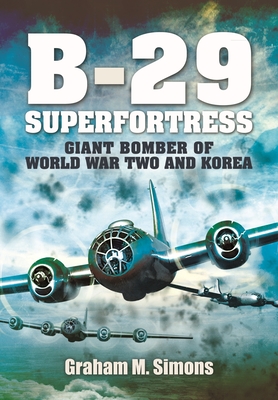B-29: Superfortress: Giant Bomber of World War 2 and Korea

B-29: Superfortress: Giant Bomber of World War 2 and Korea
The B-29 was one of the largest aircraft to see service during World War Two. A very advanced bomber for its time, it included features such as pressurized cabins, an electronic fire-control system and remote-controlled machine-gun turrets. Though it was designed as a high-altitude daytime bomber, in practice it actually flew more low-altitude nighttime incendiary bombing missions. It was the primary aircraft in the American firebombing campaign against Japan in the final months of World War Two, and carried the atomic bombs that destroyed Hiroshima and Nagasaki. Unlike many other World War Two-era bombers, the B-29 remained in service long after the war ended, with a few even being employed as flying television transmitters. The type was finally retired in the early 1960s, with 3,960 aircraft in all built.
Without doubt there is a clear, strong requirement to put the record straight using primary source documentation to record the undoubted achievements alongside and in context with the shortcomings to the types design and operation that have otherwise received scant attention. The book will cover all variants and is profusely illustrated.
122.33Lei
122.33Lei
Livrare in 2-4 saptamani
Descrierea produsului
The B-29 was one of the largest aircraft to see service during World War Two. A very advanced bomber for its time, it included features such as pressurized cabins, an electronic fire-control system and remote-controlled machine-gun turrets. Though it was designed as a high-altitude daytime bomber, in practice it actually flew more low-altitude nighttime incendiary bombing missions. It was the primary aircraft in the American firebombing campaign against Japan in the final months of World War Two, and carried the atomic bombs that destroyed Hiroshima and Nagasaki. Unlike many other World War Two-era bombers, the B-29 remained in service long after the war ended, with a few even being employed as flying television transmitters. The type was finally retired in the early 1960s, with 3,960 aircraft in all built.
Without doubt there is a clear, strong requirement to put the record straight using primary source documentation to record the undoubted achievements alongside and in context with the shortcomings to the types design and operation that have otherwise received scant attention. The book will cover all variants and is profusely illustrated.
Detaliile produsului










